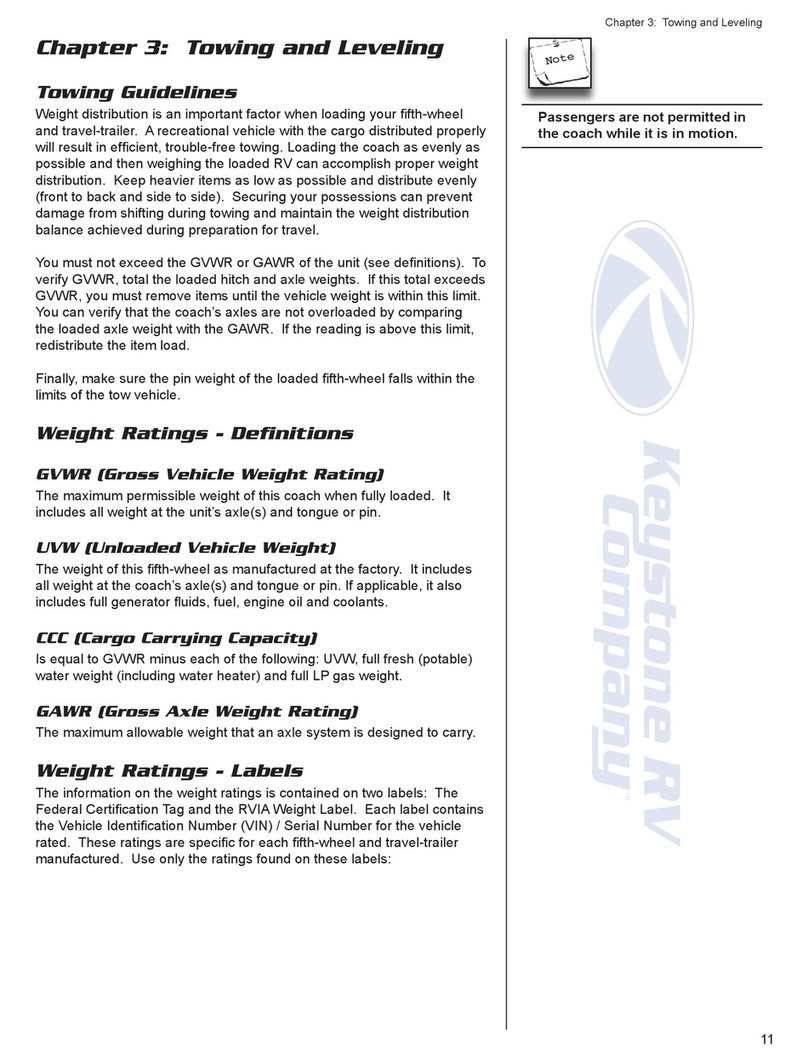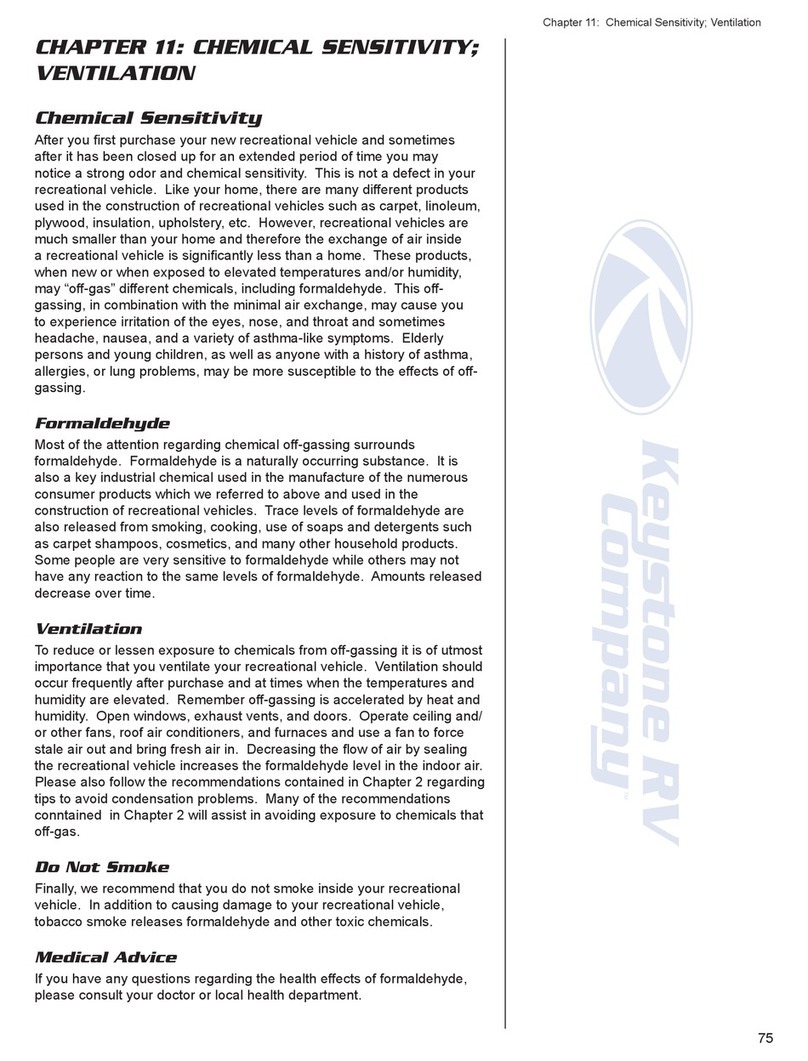
9
Chapter 2: Effects of Prolonged Occupancy
Chapter 2: Effects of Prolonged
Occupancy
Your recreational vehicle was designed primarily for recreational use and
short-term occupancy. If you expect to occupy the coach for an extended
period, be prepared to deal with condensation and the humid conditions
that may be encountered. The relatively small volume and tight compact
construction of modern recreational vehicles means that the normal living
activities of even a few occupants will lead to rapid moisture saturation of
the air contained in the fth-wheel and the appearance of visible moisture,
especially in cold weather.
Just as moisture collects on the outside of a glass of cold water during
humid weather, moisture can condense on the inside surfaces of the
recreational vehicle during cold weather when relative humidity of the
interior air is high. This condition is increased because the insulated walls
of a recreational vehicle are much thinner than house walls. Estimates
indicate that a family of four can vaporize up to three gallons of water daily
through breathing, cooking, bathing and washing.
Unless the water vapor is carried outside by ventilation or condensed by
a dehumidier, it will condense on the inside of the windows and walls as
moisture or in cold weather as frost or ice. It may also condense out of
sight within the walls or the ceiling where it will manifest itself as warped
or stained panels. Appearance of these conditions may indicate a serious
condensation problem. When you recognize the signs of excessive
moisture and condensation in the coach, action should be taken to
minimize their effects.
To Avoid Condensation Problems, Follow
These Tips
• Allow excess moisture to escape to the outside when bathing,
washing dishes, hair- drying, laundering and using appliances and
non-vented gas burners.
• Always use the vent hood when cooking.
• Keep the bathroom door closed and the vent or window open
when bathing and for a period of time after you have nished.
• Do not hang wet clothes in the coach to dry.
• In hot weather, start the air conditioner early as it removes excess
humidity from the air while lowering the temperature.
• Keep the temperature as reasonably cool during cold weather
as possible. The warmer the vehicle the more cold exterior
temperatures and warm interior temperatures will collide on wall
surfaces creating condensation.
• Use a fan to keep air circulating inside the vehicle so
condensation and mildew cannot form in dead air spaces. Allow
air to circulate inside closets and cabinets (leave doors partially
open). Please keep in mind that a closed cabinet full of stored
goods prevents circulation and allows the exterior temperature to
cause condensation.
• The natural tendency would be to close the vehicle tightly during
cold weather. This will actually compound the problem. Simply
put, you need to remove some of the warm air and allow some
cool outside air to get inside the vehicle so the furnace will not
recycle the humid interior air.
• Use uorescent ceiling lights and minimize prolonged use of
incandescent lights, which produce heat and contribute to
condensation in the roof above the ceiling lights.





















